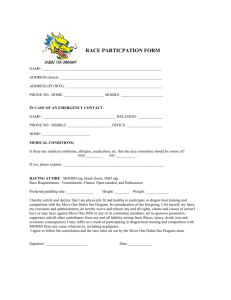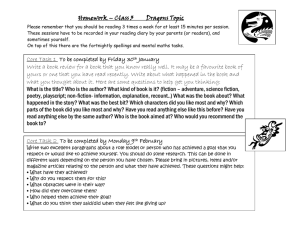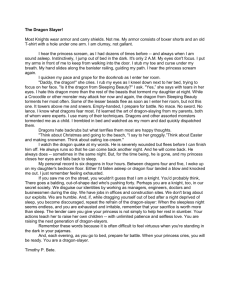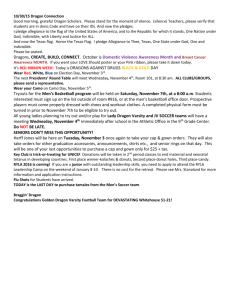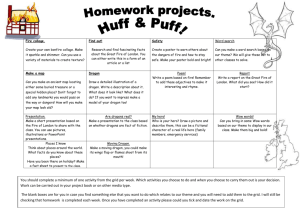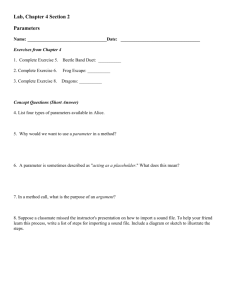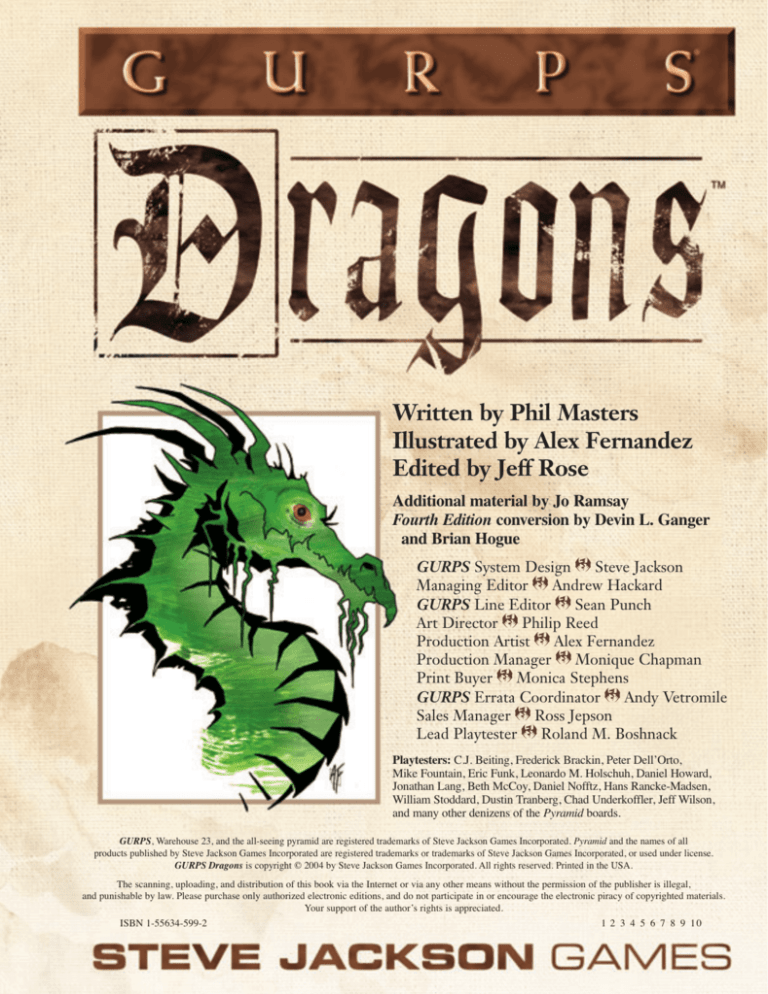
Written by Phil Masters
Illustrated by Alex Fernandez
Edited by Jeff Rose
Additional material by Jo Ramsay
Fourth Edition conversion by Devin L. Ganger
and Brian Hogue
GURPS System Design • Steve Jackson
Managing Editor • Andrew Hackard
GURPS Line Editor • Sean Punch
Art Director • Philip Reed
Production Artist • Alex Fernandez
Production Manager • Monique Chapman
Print Buyer • Monica Stephens
GURPS Errata Coordinator • Andy Vetromile
Sales Manager • Ross Jepson
Lead Playtester • Roland M. Boshnack
Playtesters: C.J. Beiting, Frederick Brackin, Peter Dell’Orto,
Mike Fountain, Eric Funk, Leonardo M. Holschuh, Daniel Howard,
Jonathan Lang, Beth McCoy, Daniel Nofftz, Hans Rancke-Madsen,
William Stoddard, Dustin Tranberg, Chad Underkoffler, Jeff Wilson,
and many other denizens of the Pyramid boards.
GURPS, Warehouse 23, and the all-seeing pyramid are registered trademarks of Steve Jackson Games Incorporated. Pyramid and the names of all
products published by Steve Jackson Games Incorporated are registered trademarks or trademarks of Steve Jackson Games Incorporated, or used under license.
GURPS Dragons is copyright © 2004 by Steve Jackson Games Incorporated. All rights reserved. Printed in the USA.
The scanning, uploading, and distribution of this book via the Internet or via any other means without the permission of the publisher is illegal,
and punishable by law. Please purchase only authorized electronic editions, and do not participate in or encourage the electronic piracy of copyrighted materials.
Your support of the author’s rights is appreciated.
ISBN 1-55634-599-2
1 2 3 4 5 6 7 8 9 10
1
INTRODUCTION . . . . . . . 4
About GURPS . . . . . . . . . . . . . . . . . 4
1. THE NAME OF
THE BEAST . . . . . . . 5
ESSENTIAL SYMBOLS . . . . . . . . . . . . . . . 6
ANCIENT DRAGONS . . . . . . . . . . . . . . . . 7
Sumer . . . . . . . . . . . . . . . . . . . . . . . . 7
Messengers and Angels? . . . . . . . . . 8
Babylonian Myth: Tiamat . . . . . . . . . 8
Egypt . . . . . . . . . . . . . . . . . . . . . . . . 8
Ancient Persia . . . . . . . . . . . . . . . . . 8
Greece . . . . . . . . . . . . . . . . . . . . . . . 9
Fear Death by Water . . . . . . . . . . . . . 9
Islamic Dragons . . . . . . . . . . . . . . . 10
WESTERN DRAGONS . . . . . . . . . . . . . . . 11
Description . . . . . . . . . . . . . . . . . . . 11
Celtic Myths . . . . . . . . . . . . . . . . . . 11
Germanic and Norse Myth . . . . . . . 12
Growing Hoards . . . . . . . . . . . . . . . 12
Sea Serpents . . . . . . . . . . . . . . . . . . 13
Old English Myth . . . . . . . . . . . . . . 13
Medieval Dragons . . . . . . . . . . . . . 13
Here Be Dragons? . . . . . . . . . . . . . 14
Medieval Variations . . . . . . . . . . . . 14
Processional Dragons . . . . . . . . . . 14
Old World Winged Serpents . . . . . . 15
Other European Legends . . . . . . . . 15
The Red Cross Knight . . . . . . . . . . . 15
Ordo Draconis . . . . . . . . . . . . . . . . 16
Symbolism . . . . . . . . . . . . . . . . . . . 16
Dragon Diet and Metabolism . . . . . 17
EASTERN DRAGONS . . . . . . . . . . . . . . . 18
The Essential Form . . . . . . . . . . . . . 18
A Clash of Symbols . . . . . . . . . . . . . 18
The Nature of Chinese Dragons . . . 19
Pearl of the Orient . . . . . . . . . . . . . 19
Dragon Lines . . . . . . . . . . . . . . . . . 20
Cult of the Dragon Lady . . . . . . . . . 20
Japanese Dragons . . . . . . . . . . . . . . 21
Eastern Dragon Imagery . . . . . . . . 21
Korean Dragons . . . . . . . . . . . . . . . 21
OTHER DRAGONS? . . . . . . . . . . . . . . . . 21
Nagas in GURPS . . . . . . . . . . . . . . 22
PRE-COLUMBIAN AMERICA . . . . . . . . . . 22
MODERN FANTASY . . . . . . . . . . . . . . . . 23
Dragons in Dungeons . . . . . . . . . . . 23
Tolkien and After . . . . . . . . . . . . . . 24
Japanese Monster Movies . . . . . . . . 24
2
Contents
Draconic Lizardman . . . . . . . . . . . . 25
Science Fiction . . . . . . . . . . . . . . . . 25
REAL DRAGONS . . . . . . . . . . . . . . . . . . 25
Dinosaurs . . . . . . . . . . . . . . . . . . . . 26
Dragon Bones . . . . . . . . . . . . . . . . . 26
2. PLAYING
WITH FIRE . . . . . . . 27
FITTING DRAGONS INTO
A GAME WORLD . . . . . . . . . . . . . . . 28
Dragons as Ravening Beasts . . . . . 28
Realism, Folklore,
or High Fantasy . . . . . . . . . . . . . 28
Dragons as Intelligent Monsters . . . 29
Dragons as Complex Characters . . . 29
Fighting Diabolical Dragons . . . . . 29
PLAYING A DRAGON’S ROLE . . . . . . . . . 30
Riddle Games . . . . . . . . . . . . . . . . . 30
Playing Long-Lived Characters . . . 31
Dragons and Strange Gods . . . . . . 32
Flesh or Spirit? . . . . . . . . . . . . . . . . 32
Virgin Sacrifices . . . . . . . . . . . . . . . 33
Comic Relief . . . . . . . . . . . . . . . . . . 34
DRAGON-ORIENTED CAMPAIGNS . . . . . . 34
The All-Dragon Campaign . . . . . . . 34
Wandering Water Monsters? . . . . . . 34
Campaign Themes . . . . . . . . . . . . . 35
Campaign Categorization . . . . . . . . 36
(Mis)Using the Shoulder Dragon . . 36
DRAGON TACTICS . . . . . . . . . . . . . . . . . 38
DRACONIC LIFE CYCLES . . . . . . . . . . . . 39
Age . . . . . . . . . . . . . . . . . . . . . . . . . 39
Breeding . . . . . . . . . . . . . . . . . . . . . 39
LAIRS AND HOARDS . . . . . . . . . . . . . . . 39
For I Am a Material Wyrm . . . . . . . 40
A Possessive Streak? . . . . . . . . . . . . 40
DRACONIC SOCIETY . . . . . . . . . . . . . . . 41
Dragon Social Types . . . . . . . . . . . . 41
Reptile Sociability . . . . . . . . . . . . . 41
Etiquette at the Top of
the Food Chain . . . . . . . . . . . . . 42
Dragons and Cultural
Familiarity . . . . . . . . . . . . . . . . . 42
Rites of Tooth and Claw . . . . . . . . . 43
RELATING TO LESSER BEINGS . . . . . . . . 44
Human Slaves . . . . . . . . . . . . . . . . 44
Treaties and Alliances . . . . . . . . . . . 44
Dragons and Wizards . . . . . . . . . . . 44
Tamed of Domesticated
Dragons . . . . . . . . . . . . . . . . . . . 45
Other Interactions . . . . . . . . . . . . . 45
GENRE CROSSOVERS . . . . . . . . . . . . . . . 45
Historical Fantasy . . . . . . . . . . . . . . 46
In Nomine . . . . . . . . . . . . . . . . . . . . 46
Dark Dragons . . . . . . . . . . . . . . . . . 46
Urban Fantasy . . . . . . . . . . . . . . . . 46
Dragons and Supers . . . . . . . . . . . . 47
Steampunk . . . . . . . . . . . . . . . . . . . 47
Castle Falkenstein . . . . . . . . . . . . . 47
Science Fiction . . . . . . . . . . . . . . . . 47
3. HATCHING A
DRAGON . . . . . . . . 49
DRAGON TEMPLATES . . . . . . . . . . . . . . 50
Detailing Dragons as Characters . . 50
Winged Serpents . . . . . . . . . . . . . . . 51
Professor Friedl’s
Mechanical Dragon . . . . . . . . . . 52
Hit Locations . . . . . . . . . . . . . . . . . 53
Undead Dragons . . . . . . . . . . . . . . 54
Becoming a Dragon through
a Curse . . . . . . . . . . . . . . . . . . . 55
Western Dragons . . . . . . . . . . . . . . 56
Valor and Snarl . . . . . . . . . . . . . . . 58
Chinese Dragons (Lung) . . . . . . . . . 59
Danger in the Scales . . . . . . . . . . . 62
Dinosaurs, Pterosaurs,
and Megalania . . . . . . . . . . . . . 63
Lenses: Personalities, Reputations,
and Roles . . . . . . . . . . . . . . . . . . 64
Standard Dragon Attribute
Summary . . . . . . . . . . . . . . . . . . 66
4. TOOTH AND CLAW
AND FIERY MAW . . 69
POWER INCARNATE . . . . . . . . . . . . . . . . 70
Size and Strength . . . . . . . . . . . . . . 70
Scales of Iron . . . . . . . . . . . . . . . . . 70
Mobility and Speed . . . . . . . . . . . . 70
The Weakest Link . . . . . . . . . . . . . . 71
Reality Check . . . . . . . . . . . . . . . . . 71
The Flight Advantage and Skill . . . 72
POISON AND BREATH WEAPONS . . . . . . 72
Protection and
Pestilential Breath . . . . . . . . . . . 73
Breathe Fire Advantage . . . . . . . . . 74
Dragon Blight . . . . . . . . . . . . . . . . . 74
OTHER ATTACKS . . . . . . . . . . . . . . . . . . 75
Environmental Variation
and Color-Coding . . . . . . . . . . . 75
Dragons vs. Guns . . . . . . . . . . . . . . 76
Venomous Blood . . . . . . . . . . . . . . 77
DRAGON COMBAT MANEUVERS . . . . . . 78
NEW CHARACTER FEATURES . . . . . . . . . 79
New Advantages . . . . . . . . . . . . . . . 79
New Disadvantages . . . . . . . . . . . . 80
Many-Headed Dragons . . . . . . . . . 80
Attack Enhancements
and Limitations . . . . . . . . . . . . . 81
The Social Standing of Dragons . . . 81
Metabolic Variations . . . . . . . . . . . . 82
Other Possible Variations . . . . . . . . 82
5. DRAGONS AND
MAGIC . . . . . . . . . 83
WIELDERS OF MAGIC OR
CREATURES OF MAGIC? . . . . . . . . . 84
Spells Instead of Powers . . . . . . . . . 84
Inherent Magic, Learned Magic . . . 84
And the wild beasts of the islands
shall cry in their desolate houses, and
dragons in their pleasant palaces . . .
– Isaiah 13:22
Breathing life into the fire-spouting
lizard, beyond a few simple stereotypes
and a liking for fresh meat, is a challenge
for both players and GMs. How do dragons
feed? Where do they live? Do they meet,
and if so, where? How does a creature that
could live for centuries amuse itself, or
relate to humanity? Finally, can this topic
be interesting and varied enough to build a
whole campaign around the subject?
Peasant Heroes
When a rampaging monster oppresses the peasantry, or the
aristocracy and professional warriors have demonstrated that
they are not up to the job, a hero can step forth from the common people (or volunteer from the condemned cell). Sometimes
his luck or skill matches his confidence.
Peasant heroes lean more on cleverness and trickery than
other monster slayers. Ambushes, traps, and poison all appear in
legends and folklore, and usually work. The dragons in these
tales are animalistic, and low-intelligence. Even the ones that
talk may fall for the fluent verbal trickery of a smart rustic, and
will usually eat something unwise. Sometimes these tales end
with the dragon’s poison blood or splattered venom killing the
unfortunate hero shortly after the battle.
Knights in Shining Armor
Dragon myths mostly build archetypes, so the slayers are
often trained specialists with good equipment and nice manners.
Noble warriors tackle dragons and monsters in Greek, Persian,
and Northern European myths, with similar success. Some
heroes, like St. George, are also deeply pious, and the tale
becomes a religious parable as much as an action story. But
other dragon-slaying knights are simply good fighters.
If the knight charged home on horseback with couched lance,
it could certainly do a lot of damage. However, the knight would
need a reliable warhorse willing to charge in close to a huge,
fire-breathing carnivore, and even after the charge, the dragon
could still be standing. The hero often ends up on foot, hacking
the beast to death with a heavy blade. Truly epic fights go on for
hours or days. Even allowing for poetic exaggeration, heroes
should have high degrees of fitness and reserves of fatigue.
Armies
Monsters could be taken down by sheer force of numbers.
This gets messy; the creature will probably chew through much
of the rank and file before blood loss and lucky shots finally kill
The Significance
of Slaying
If dragons are special – more than just big, tough monsters –
then killing one makes you significant, too. Conventionally,
heroes who kill dragons are destined for greatness. Perseus
(p. 9) was a son of Zeus, while Siegfried (p. 12) became the central figure of a great story-cycle. In many Christian tales, only
saints could defeat dragons. Presumably, dragons were transcendentally evil, only countered by supreme virtue. Several
English towns and villages have traditional stories in which a
terrible wyrm was slain by a knight who then founded a leading
local family (possibly developed as explanations of the mythical beasts on the local lords’ coat of arms, or of some odd place
name). Similarly, in tales such as Tolkien’s The Hobbit, killing
a dragon is a quick way to become a ruler.
Incorporating this principle into RPGs may be hard,
although it should serve as a reminder that dragons are special,
only deployed by a GM needing a memorable fight scene.
However, if one PC has the Destiny advantage, a GM could
maneuver that character into the starring role, even if dragonslaying is not his Destiny in itself. Likewise, a Reputation as a
dragon-slayer (merited or not) is often good for a +2 or better
reactions.
it off. If the dragon’s resilience lies more in soaking up damage
than in bouncing it off invulnerable scales (in GURPS terms,
lots of hit points instead of high DR), the mass assault may
work. Also, if it is only vulnerable to lucky shots to a small weak
point (p. 71), having plenty of people attacking means that
chance should eventually favor the human side.
Mustering and heartening an army to attack a dragon will be
difficult, but if the beast has been devastating the land, or has a
huge hoard, a little impassioned rhetoric should do the job.
Keeping the troops in the field after horrendous initial casualties
may be harder. This is where commanders with high
Leadership and Bard skills make all the difference. Still, rhetoric can only go so far;
the leaders had better have a good plan.
Slayers and Servitors
95
FEAR
AND
FLAME
Dragons Are: Powerful to Very Powerful, Fairly Common,
Intelligent, and Exotic.
Dragons Represent: Ravening terror, threatening to devastate human civilization and even wipe out humanity altogether.
PCs Are: Tough human or similar heroes, struggling to
acquire the power, skill, and knowledge to challenge the
dragons.
This campaign puts a post-apocalyptic spin on conventional
fantasy games – and dragons provide the apocalypse.
Traditionally, full-sized dragons are a threat and a rarity; this
campaign assumes that the threat has been realized, and dragons
have become too common.
The Campaign World
The simplest set up for this game’s
background involves two steps. 1. Take the
map of a fantasy world. 2. Wreck it.
The basis should be a coherent, consistent fantasy setting, probably the usual
pseudo-medieval elves-and-dwarves-andwizards pattern. Feel free to use any published world, so long as you enjoy mangling it; Yrth (from the upcoming GURPS
Banestorm) is a good candidate. Treat your
choice the same way that post-apocalyptic
thrillers treat the real world.
The Dragons
Now, add wyrms. The world probably had them before, but
they probably were rare, up in the mountains and on the map’s
edges. But something has changed.
Precisely what triggered the disaster should begin as a mystery to the PCs, and could be irrelevant to them for some time.
In fact, you do not have to decide at first yourself. The following are some possibilities:
1. Dragons control their own fertility, but normally choose to
keep themselves rare, to avoid competition for lairs and hoards.
However, a few years ago, after too many respected wyrms were
slain by bands of nasty little human adventurers, the dragon
council resolved to end the problem by going on the offensive.
Now, after decades of breeding and preparation, the dragon
“army” has been unleashed. The elders will sort out the dragon
population problem once the war ends.
2. Dragon breeding is a subtle mystery for human scholars,
who do not realize that young dragons start out very numerous
and very small, resembling mundane lizards. Breeding always
takes place in wilderness areas, where another predatory monster species heavily thins out the young before they sprout wings
and fly to mountains in search of lairs. Unfortunately, humans
(or orcs, or dwarves, or somebody) consider the natural predator
a problem, and a few years ago, a strong king organized a campaign of extermination. This ignorant mistake’s effects created a
generation of young firedrakes.
3. A wizard (or possibly a powerful, magically adept dragon)
recently attempted a great spell – which suffered a disastrous
failure. It opened gates to one or more worlds where dragons are
common, or perhaps pulled the dragons through from several
other worlds. (This could well be related to the “Banestorm” of
Yrth; if the game is set on Yrth, the Dark Elves may have tried
their great spell again, even more disastrously than before.)
Other options and variations are possible; for example, the
elder dragons from (1) could have sought a magical solution to
their problem, leading to the great summoning of (3). GMs can
get as complicated as they wish.
In any case, the dragons have now appeared – and attacked.
The result is hardly a “war,” as the dragons have no overall strategy. In some places, solitary dragons wander at random, plundering and destroying; in others, groups (perhaps families) of
dragons work together methodically. Some dragons accept surrenders, and employ humans as slaves (though never as anything better). Others seek only to destroy. In some places,
human heroes or armies have scored victories, and some communities are holding out, although they have a hard task
defending their fields, but the fury and power of the sudden
eruption, from so many directions, wrecked any initial
chances of an organized defense.
Now, human forces are beginning to coordinate, but squabbles between leaders and uncertainty over the best strategy
complicate matters – and far worse, some dragons, too, seem
to be cooperating to plan their next moves.
Dragon Types
GMs should pick a dragon species from Chapter 3, perhaps
with a range of sizes or ages, for use as the main opposition.
The standard Western Dragon (p. 56) is the obvious candidate.
If the chosen back-story permits the involvement of multiple
species, things can become more unpredictable for PCs.
Fighting wyrms on the plains, small flying dragons in the
mountains, and sea serpents on the oceans, would call for a
greater range of tactics, and may increase the sense of viciously
hostile world.
Characters
This straight-down-the-line dragon-slaying campaign pitches
bands of heroic human (and other) adventurers against lots of
big lizards. There will lots of combat, lots of glory, and almost
certainly lots of dead heroes. Bloodthirsty slayers simply wanting combat will have every opportunity, but diplomacy, strategy,
and planning, will all be necessary as communities struggle to
organize.
1. Take the map of a fantasy world.
2. Wreck it.
Players should therefore be competent and combat-oriented.
The optimum starting point level depends on the campaign style
and the average dragon’s power level, but 150-200 point characters may fare better than the usual 100-pointers.
Overwhelmed individuals may have to be disposable – but hey,
they get to try to kill dragons. A lot. Groups consisting entirely
of tough or canny warriors fit the post-catastrophe theme, but
leavening these with a few wizards and healers may make for
better survival chances.
Other Times, Other Dragons
135

